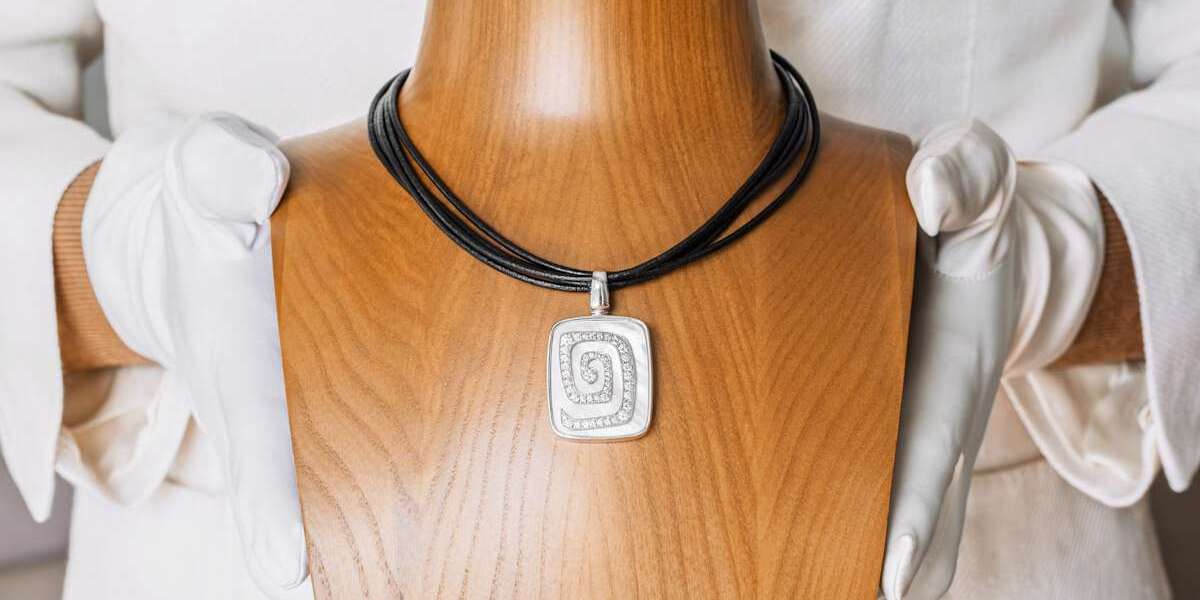The Auction House Finds Necklaces with Royal Provenance
Auction houses consistently achieve record-breaking prices for necklaces with documented royal ownership, demonstrating how provenance transforms jewelry from decorative objects into historical artifacts. Major sales houses like Sotheby's and Christie's have recorded numerous transactions where royal lineage multiplied estimated values by factors of three to five times comparable pieces without documented ownership history.
The market for royal jewelry operates independently from traditional gemological valuations, where carat weight and clarity standards typically determine pricing. Instead, collectors pay premiums for documented connections to specific monarchs, royal houses, or significant historical periods, creating a specialized segment within the luxury jewelry market.
Collectors seeking authenticated pieces with verified heritage often turn to curated sources specializing in documented provenance, where vintage necklaces from established collections provide the authentication and historical documentation essential for serious acquisition decisions.
Notable Royal Necklace Sales and Their Impact
Recent decades have witnessed several landmark royal jewelry auctions that established new market benchmarks for pieces with documented royal provenance. These sales demonstrate how authentication and historical significance create extraordinary valuations beyond traditional jewelry appraisal methods.
Significant auction results include:
- Marie Antoinette's natural pearl necklace - Achieved $36.2 million at Sotheby's in 2018, setting records for natural pearls
- The Baroda Pearls collection - Multiple Christie's sales spanning decades, originally from the Maharajas of Baroda
- Duchess of Windsor estate jewelry - 1987 Sotheby’s sale totaling $50 million, with individual pieces exceeding estimates by 200-500%, depending on the lot
- Princess Margaret's Poltimore Tiara - Sold for £926,400 in 2006, demonstrating market appetite for British royal pieces
These sales established pricing precedents that continue to influence contemporary valuations for royal jewelry, with auction houses now dedicating specialized departments to royal and noble jewelry authentication and marketing.
Market analysis shows that pieces with verified royal provenance consistently outperform comparable jewelry without documented ownership history, creating a distinct investment category within luxury collectibles.
Authentication and Documentation Challenges
Establishing authentic royal provenance requires extensive documentation that extends beyond traditional gemological analysis. Authentication specialists must verify historical records, examine period photographs, and trace ownership chains through court inventories and royal household accounts to confirm legitimate royal connections.
Industry Standard: Leading auction houses require a minimum of three independent documentary sources to establish royal provenance claims, including court records, contemporary photographs, or documented gift presentations.
The dissolution of European monarchies during the 20th century created particular challenges for authentication, as many royal collections were dispersed without complete documentation. Pieces from the Russian Imperial family, German principalities, and Eastern European royal houses often lack continuous ownership records, making verification extremely difficult.
Expert Authentication Protocol: Gemologists examine construction techniques, hallmarks, and materials to confirm period authenticity, while historians verify documentation against known royal inventory records and contemporary accounts of jewelry gifts or commissions. Additionally, gemological analysis of stones, such as pearls or diamonds, using techniques like spectroscopy or X-ray diffraction, confirms material authenticity and consistency with the claimed period.
Modern technology assists authentication through techniques such as micro-CT scanning or scanning electron microscopy, which reveal construction methods and material composition consistent with specific periods and royal workshop practices.
Market Dynamics and Collector Psychology
Royal provenance creates premium pricing that reflects psychological factors beyond traditional investment calculations. Collectors report that owning jewelry with documented royal connections provides emotional satisfaction derived from tangible historical connections, explaining why buyers consistently pay multiples above comparable pieces without royal lineage.
Geographic market preferences reveal distinct collecting patterns, with European collectors showing preference for pieces from their regional monarchies, while American collectors demonstrate strong interest in British royal jewelry and Russian Imperial pieces. Asian markets, particularly in Hong Kong and mainland China, have emerged as significant buyers of European royal jewelry, viewing these acquisitions as both cultural prestige investments and opportunities for long-term financial appreciation.
Demographic analysis indicates that royal jewelry attracts both individual collectors and institutional buyers, including museums and private foundations. Private collectors often purchase royal pieces as centerpieces for broader jewelry collections, while institutions acquire them for public display and cultural preservation purposes.
The influence of media coverage and popular culture significantly affects market demand, with royal jewelry sales often coinciding with heightened public interest in monarchy-related events or historical documentaries that increase awareness of specific royal houses and their jewelry traditions.
Preservation and Legacy Considerations
Contemporary ownership of royal jewelry creates unique responsibilities that extend beyond traditional collecting practices. Current owners must balance preservation requirements with the cultural significance of these historical artifacts, often consulting conservation specialists to maintain pieces according to museum-standard protocols.
Conservation challenges specific to antique royal jewelry include:
- Material degradation - Historic settings and clasps require specialized restoration techniques
- Component authenticity risks - Replacement of original gemstones or settings with modern or synthetic alternatives, requiring expert gemological verification during restoration
- Documentation preservation - Maintaining provenance records and authentication materials
- Security considerations - Insurance and storage requirements for high-value historical pieces
- Access decisions - Balancing private ownership with public cultural interest
Ethical considerations emerge regarding private ownership of items with significant cultural heritage value. Some collectors donate royal pieces to museums through charitable arrangements that provide tax benefits while ensuring public access to important historical artifacts.
The influence of royal jewelry on contemporary design continues through modern high jewelry houses that reference historical royal pieces in new collections. This ongoing influence demonstrates how preserved royal jewelry serves as inspiration for current artisans and maintains relevance beyond pure collecting interest.
Conclusion
Royal provenance transforms vintage necklaces from luxury accessories into tangible connections to documented history, creating market valuations that reflect cultural significance alongside material worth. The sustained performance of royal jewelry at auction demonstrates collector willingness to pay substantial premiums for authenticated historical connections.
The market for royal jewelry operates as a specialized segment within luxury collecting, where documentation and provenance verification determine value propositions that often exceed traditional gemological assessments. This dynamic reflects broader trends in cultural artifact collecting, where historical significance creates investment potential independent of intrinsic material value.
Future market development will likely depend on continued authentication improvements and the emergence of new collecting demographics, particularly as global wealth distribution evolves and cultural appreciation for historical jewelry expands beyond traditional European and American markets.



